Tambour in a private house: varieties and rules of arrangement
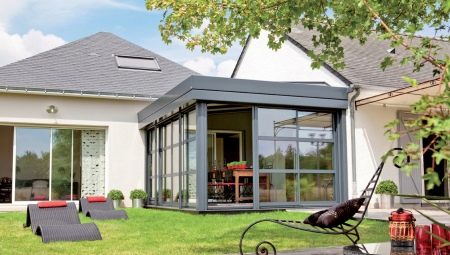
Furnishing a private home requires more efforts to keep warm than creating a harmonious and stylish apartment interior. In order to protect the room from contact with cold air from the street, additional architectural elements are used here in winter. The veranda or vestibule in the house plays the role of a compensation room that allows you to reduce heat loss.
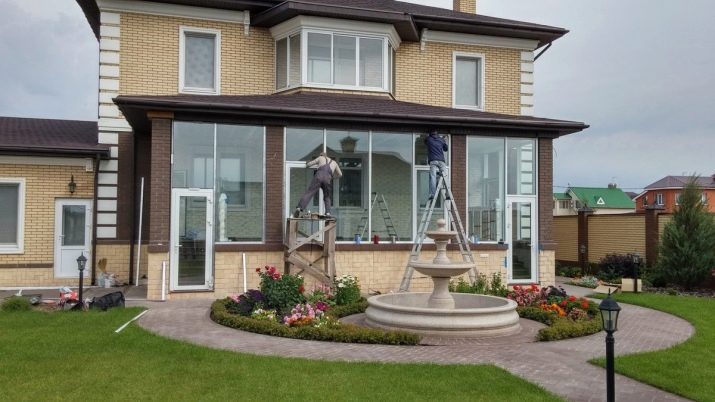
The manufacture of such a structure can be carried out even at the stage of object construction. In this case, most often you can find a vestibule, which is a dedicated part of the entrance group. If the erection of a protective "buffer" is carried out in an already erected building, it most often becomes a single whole with the structure of the porch and the canopy above it.
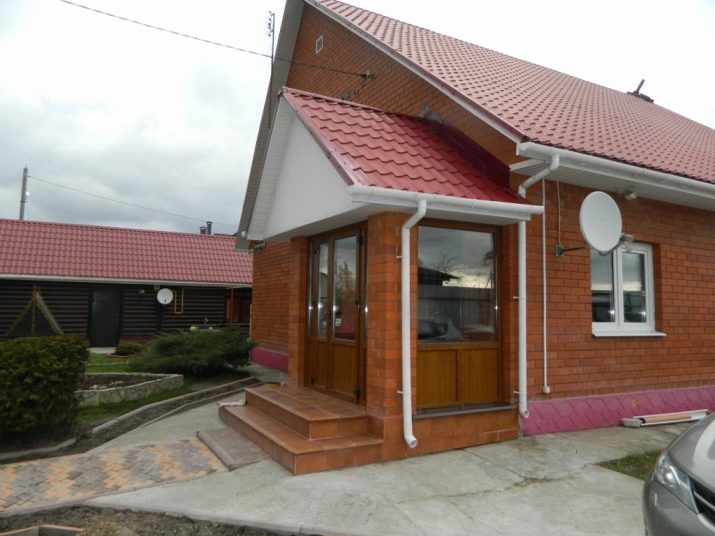
In the article, we will talk about what the design can be inside the cold vestibules made of double-glazed windows, how you can equip the interior of frame extensions and other entrance vestibules, and also study in more detail their types, features, size range, suitable finishing options.
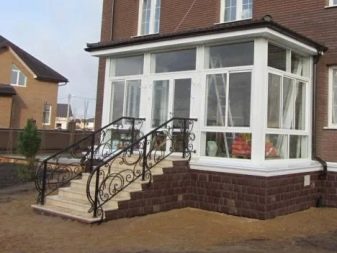
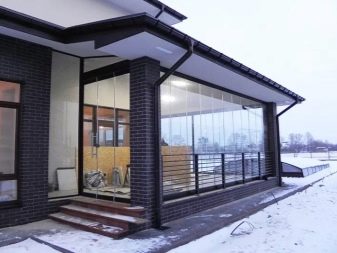
Peculiarities
Tambour in a private house - it is the space between the front door and the residential part of the building. It can have a different area and configuration, function as a hallway, or simply minimize the penetration of cold from the street inside.
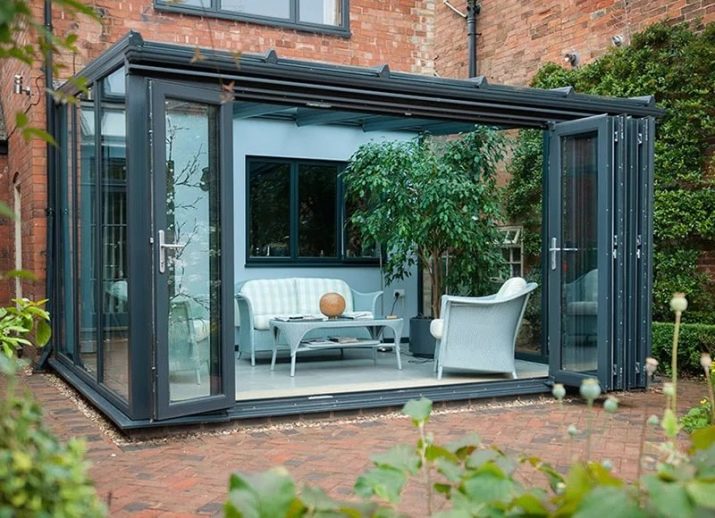
In a residential building with a seasonal type of use, it is permissible to create cold, unheated vestibules. They are similar to those used in commercial construction - in warehouses, shops. In a residential building intended for permanent residence, it is worth planning a vestibule that will maintain a comfortable air temperature all year round.
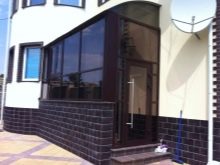
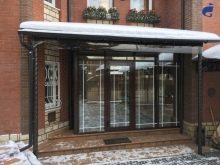

Among the features of this type of extensions, a number of factors can be noted.
Functional purpose
Unlike an apartment building, where the temperature difference is compensated by a heated entrance, in a suburban housing the front door takes all thermal shocks on itself. The presence of a vestibule allows you to avoid such troubles as freezing of locks, the formation of ice on the hinges, and the skewing of the canvas in the box.

Simplification of cleaning processes
The entrance lobby with a vestibule allows you to change shoes in a relatively small area, get rid of wet umbrellas or clothes swept by snow. This is very important in an open plan, when a common space immediately begins behind the inner door, and any dirt easily spreads throughout the kitchen, living room, dining room.

Variety of layouts and design solutions
You can choose the option of using part of the corridor, or create a full-fledged extension, glaze the existing space. External decor can be in contrast to the interior or stylistically match it. In large country houses, vestibules are often transformed into full-fledged pavilions with panoramic glazing around the perimeter.
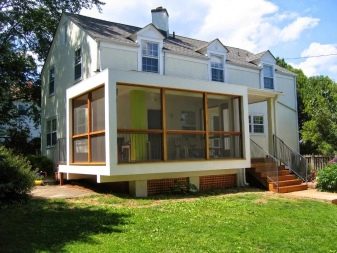
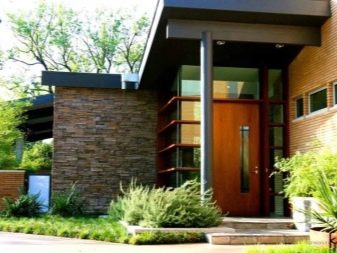
Improving sound insulation
The presence of an air buffer also has a beneficial effect on sound transmission. An important point if any noises coming from the outside penetrate through the front door into the house. Solve the problem especially well double glazed windows.
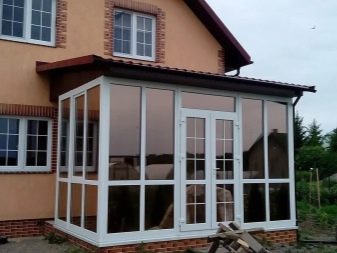
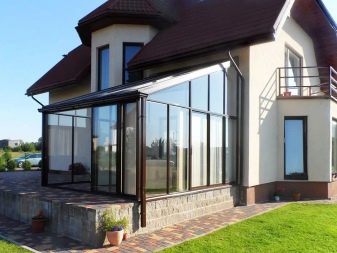
Species overview
Among all existing types of vestibules, two large groups can be distinguished: cold and heated structures. The first option does not affect the microclimate in any way, but protects against rain, wind, allows you to take off your shoes or clothes without going into the house. Heated vestibules have a heating element in the form of a radiator or underfloor heating system, glass structures are equipped with double-glazed windows.
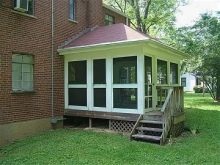
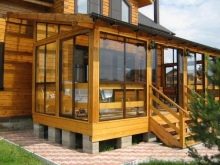
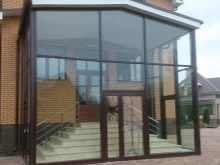
In a house intended for permanent residence, it is the insulated version that is optimal, it allows you to take out some of the functions of the hallway outside the residential premises.
But it is also worth considering the functional purpose of the object.
Veranda
A full-fledged frame extension with mandatory panoramic glazing. In summer, the vestibule-veranda, depending on the area, serves as a recreation area, bedroom or living room, summer kitchen. If the extension is small, it can be adapted for storing outerwear.
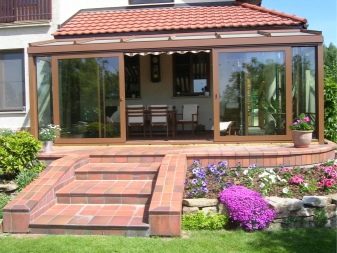
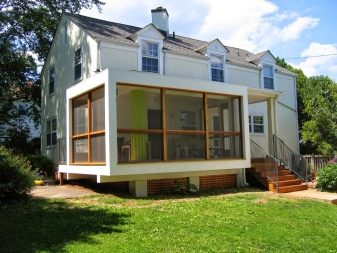
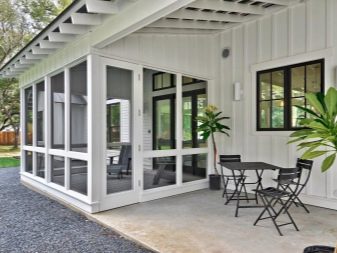
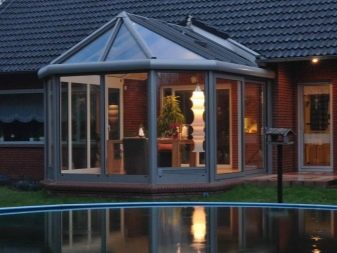
Hallway
Such a vestibule is designed in the same style as the entire building, it contains a wardrobe and other necessary furniture. The entrance hall must be heated, it has the necessary lighting. It is fenced off from the rest of the area with a sliding or classic swing door.
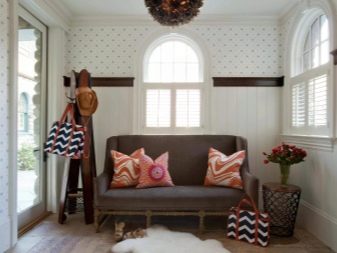
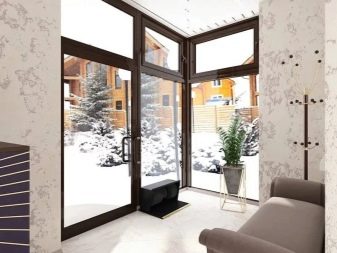
Canopy
The room is a vestibule, into which the doors are brought out not only of the residential part of the building, but also of outbuildings, auxiliary and utility rooms - a boiler room, a poultry house or a barnyard, a coal warehouse, a garage. It must be located inside the house, from the entrance to it there is a corridor.
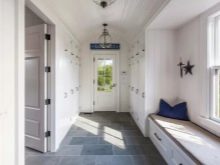
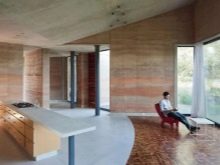
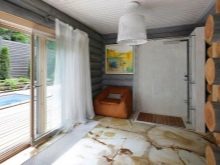
Porch
If available, it is quite easy to add glazing to the staircases and get additional storage space for shoes or tools.
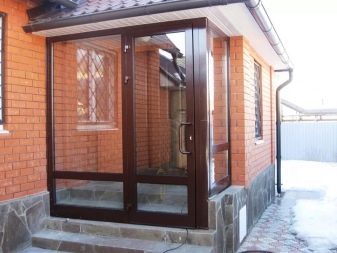
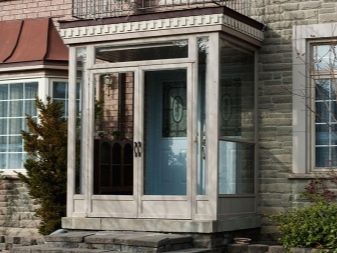
Classic vestibule
It serves as an air gap from one threshold to another, is located between the doors, and requires a distance of at least 40 cm from the box to the box. The tambour should allow two adults to fully enter the house. In this case, the street door must be completely closed when they are inside.
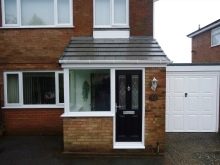
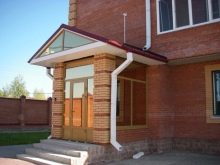
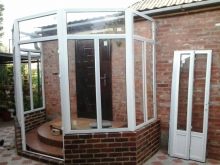
This is what the main classification of vestibules used in private residential buildings looks like. They can also be erected in a summer cottage in the presence of free space and sufficient reliability of the supporting structures.
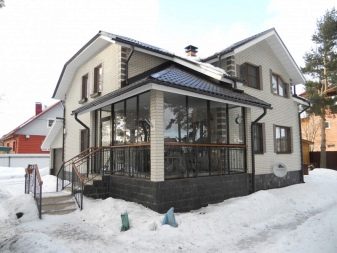
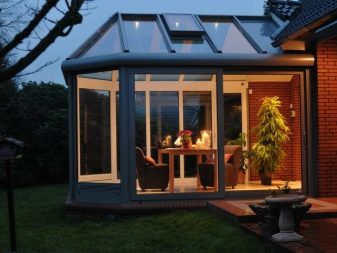
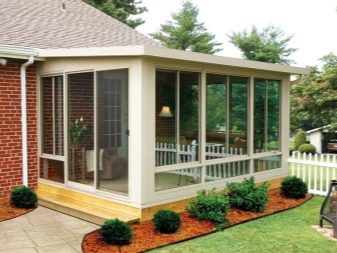
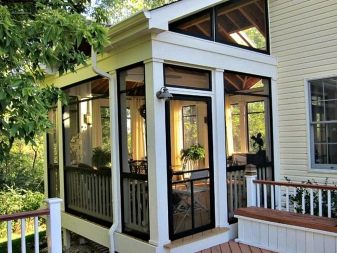
Dimensions (edit)
Consider what should be the size of the vestibule in a private house. If a small transition is created from the outer door to the inner one, its width is usually equal to the dimensions of the box with an increase of 30 cm.The depth is at least 40 cm, in this case, the double weather protection will work as it should.

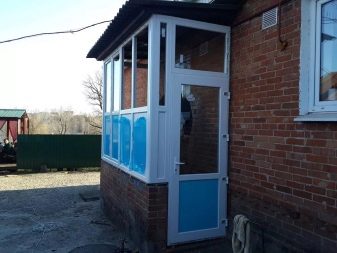
If a more complex task is laid in the functional of the room, for example, it is combined with a porch, the minimum dimensions will be 1.4 × 1.2 m.

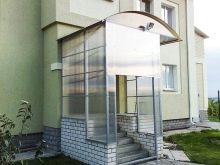
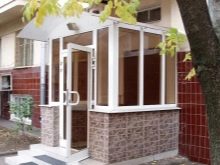
There are building codes that specify that in an energy efficient living space, at least three doors must separate living quarters from the street.
The opening direction also matters. From the vestibule and from the house, they should only swing outward. When it comes to a veranda, it makes no sense to make it too large. Usually a square format of the object is chosen, measuring 2 × 2 or 3 × 3 m.
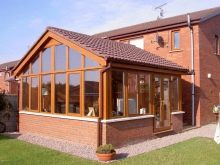
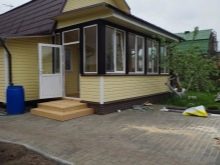
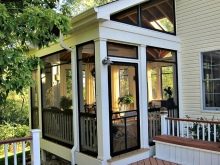
Finishing options
To finish the vestibule correctly and efficiently, it is worth deciding from the very beginning on its status and purpose. Finishing will depend on whether it is a temporary structure or a permanent extension, or whether the building is heated. If so, then all the finishing elements will need to be created taking into account a single concept with the interior and exterior of the house. For example, if there is a metal profile roof over the house, over an extension, be it a porch or a veranda, it should look like a harmonious continuation of the main slope.



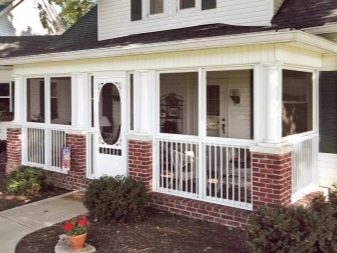
In the capital warm vestibule-hallway, you can do without windows, but if light is still needed, you should immediately put a frame made of double-glazed windows - Corner options on 2 sides give more visibility.
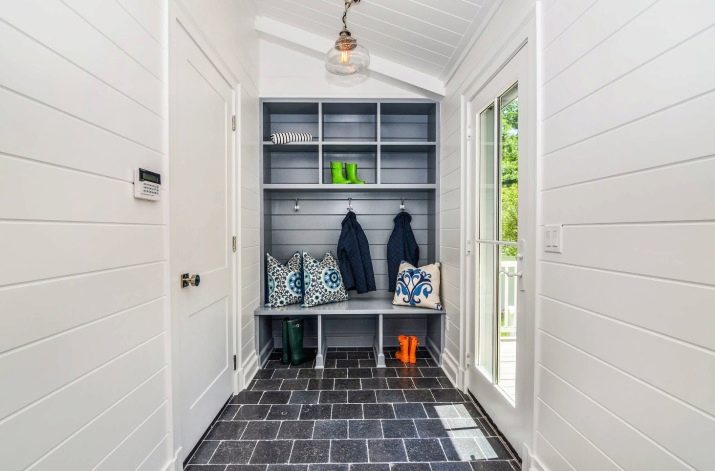
If heating is not provided, an economical option for creating a vestibule in the house or in the country is polycarbonate sheathing. This is a good solution that lets in a lot of light, is durable, allowing you to create the right air gap when entering the house. For a veranda or a pavilion around the house, only the installation of a structure made of double-glazed windows on a metal frame made of an aluminum profile is suitable - the polycarbonate sheathing will be too fragile.



A cold vestibule-veranda or unheated porch can be a convenient place to store garden swings, equipment, seasonal clothes and shoes. In the space in front of the entrance door, you can temporarily store vegetables for harvesting. If the area allows, you can equip a small workplace or a table for family tea parties here. In winter, such a transition will serve as acclimatization, will help the body to more easily perceive the cold.
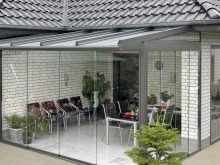

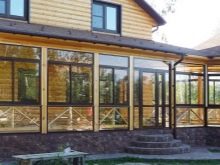
The warm vestibule in front of the entrance to the house has more varied uses. In a wooden building, it is rarely provided with its own heating - at best, a thermal curtain is used, or heated tiled floors are installed. But you can solve the problem of heat loss through accurate selection of materials. In frame buildings, thermal insulation is laid inside the walls. In brick and stone vestibules, materials are used that can save heat.

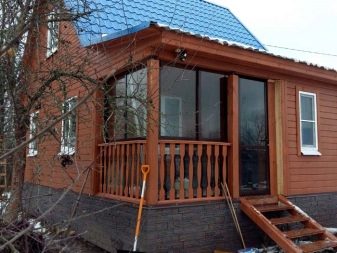
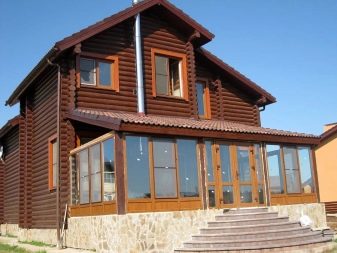
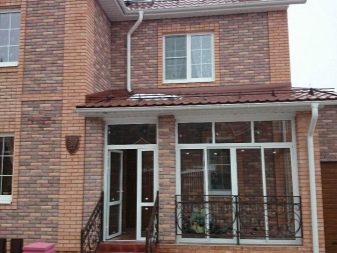
In addition, it is worth following the recommendations of specialists.
- Floors in the decoration of the vestibule should be as practical as possible, non-slip. It is better to choose rough tiles or painted wood as a coating. On linoleum and polished porcelain stoneware, the icy soles of boots and boots ride like a skating rink.
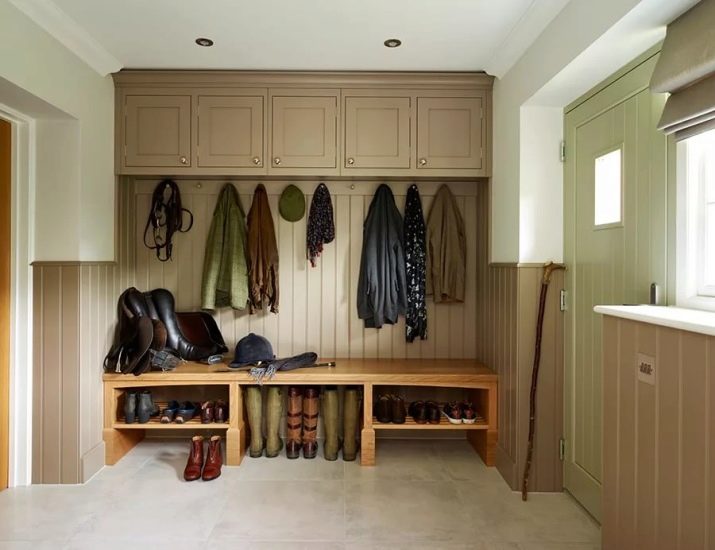
- Glazing it is necessary if it is difficult to implement other lighting methods in the room. In an unheated extension, it is enough to install ordinary frames with transparent glass structures. If the risk of heat loss is high, it is better to use full-fledged double-glazed windows with 2 or 3 chambers from the very beginning.
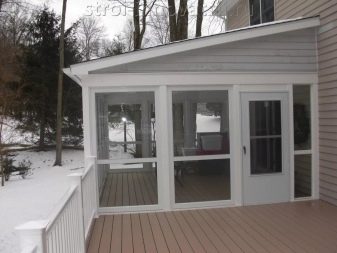
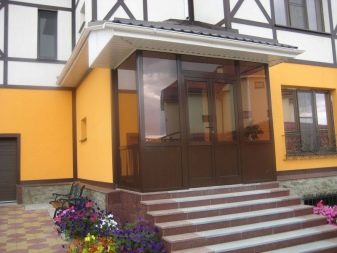
- Door in the vestibule it performs insulating functions. It can be made in the same style as other similar elements inside the house. But the entrance structure should be as reliable as possible, with a system of locks and seals. If valuable things are stored inside, the vestibule can be equipped with a lightweight version of the door, with a lock or a bolt, reinforced on the outside with sheet steel, and in the interior using the usual decorative finish.
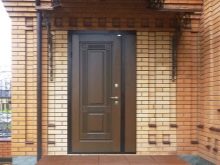
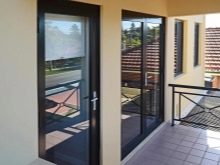
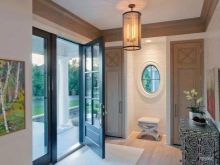
- Wall decoration should take into account the practicality of the materials.Outside, the main annex of the vestibule made of bricks or blocks can be plastered. Wooden structures are varnished or painted in the color of the house. Frame - finished with siding or decorative panels.
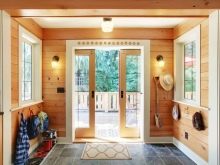

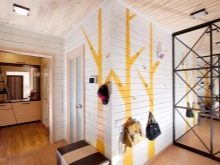
Design decoration
Vestibule projects usually envisage not only the arrangement of the interior - the space inside this functional area, but also their external design. Outside, there is usually a glazed porch or veranda.
If it is possible to choose a side to create an entrance, it is better to give preference to the north - it will protect the doors from the negative effects of precipitation.
It is not recommended to place glazed verandas in the south and southwest of the house. They will get too hot and the sun will make it difficult to rest comfortably during the day.
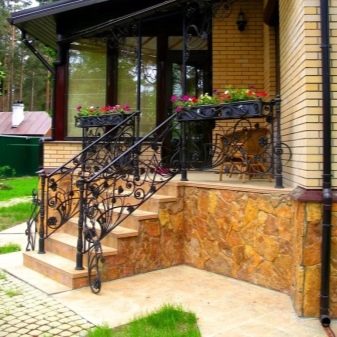

The height of the building is also important. In one-story houses or buildings with an attic, instead of a vestibule, a full-fledged veranda is often built around the entire perimeter or along one of the walls of the building. It is equipped with an aluminum or steel frame and panoramic glazing - a kind of gallery is formed with any number of entrances to the house.
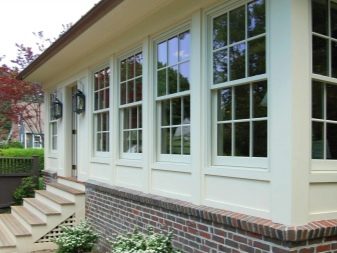

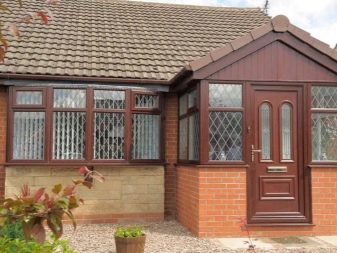

Multi-storey buildings are most often complemented by a classic closed porch or vestibule-hallway. If a building is combined with a courtyard and outbuildings, it makes sense to create a layout in which, after the street, a person will find himself in an unheated canopy that connects all premises.

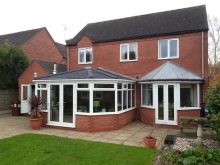
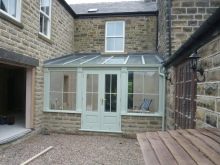
Tambour, combined with a veranda, maybe wooden - in this case, a summer living room with French windows is usually created, opening which you can go directly into the garden. The version combined with the porch is often made brick or laid out from blocks.
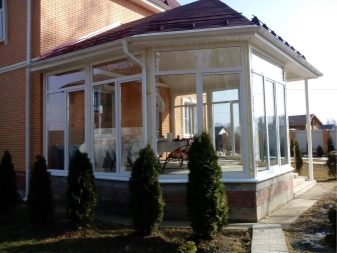
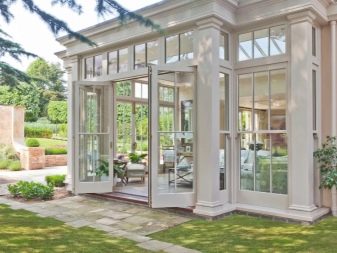
It is worth considering the size of the platforms and the height of the steps to make a truly convenient option for a permanent canopy to use.
If the house already has a visor, you can add an extension to it by simply closing the sides and adding an entrance door.


Arrangement recommendations
The interior of the vestibule does not provide for a wide variety of options for decorating it. In the absence of natural light, it is made as light as possible; you can use plastic cladding panels, drywall or chipboard to level the surfaces.
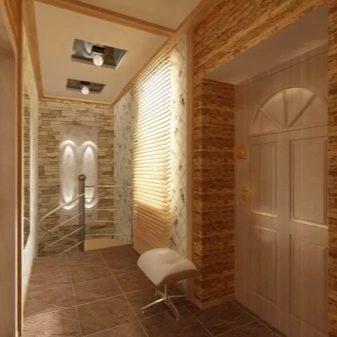

It is customary to keep the same design style in the warm vestibule-hallway as in the rest of the house. Furniture is usually represented here:
- wall hangers for outerwear;
- suspended mezzanines;
- narrow pencil cases or one large built-in wardrobe;
- shoe rack;
- banquets for changing shoes or low narrow sofas;
- benches, the space under which turns into a storage system;
- glove makers;
- dressing tables;
- chests of drawers.
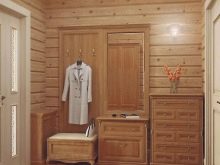
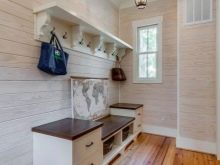
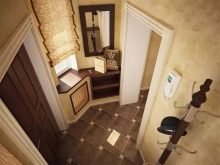
In a rectangular vestibule, furnishings are located in the corners or along the walls, without blocking the passage. To save space, you can install a sliding door in the living area of the house.
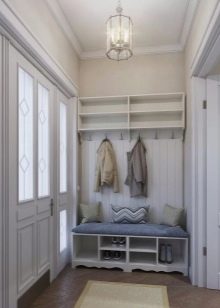
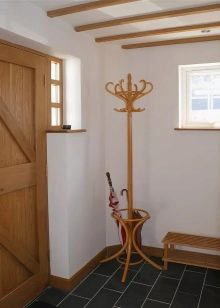
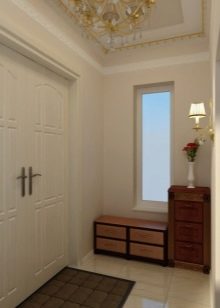
The tambour-veranda requires a fundamentally different arrangement. It is often made like a gazebo or a pavilion - semicircular, polygonal, equipped with panoramic display windows or French windows.
Here, blinds can be used to protect from the scorching sun and prying eyes.
Inside, a seating area with armchairs and a table is equipped, a sideboard or stove is placed for cooking and heating dishes.
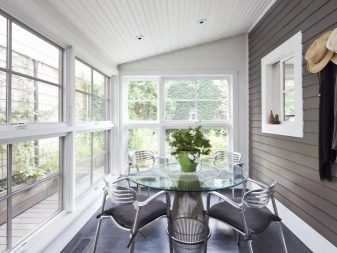
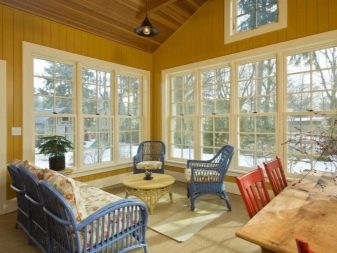
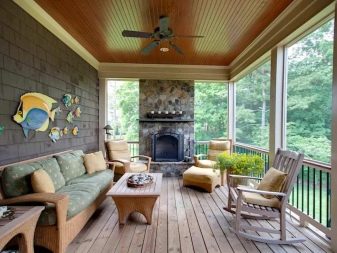

Spacious vestibule country style Is a solid wooden veranda with windows under the roof itself and massive shelves for pickles. It is decorated with fresh flowers and bunches of spicy herbs, equipped with cupboards with hinged doors, a table with benches or chairs on the sides.
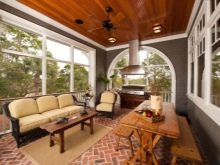

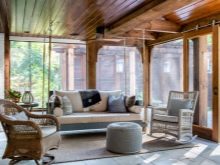
Beautiful examples
Here are several options for arranging a vestibule in a private house.
- A spacious vestibule extension, harmoniously integrated into the overall architecture of the building. Panoramic glazing transforms this part of the house into a full-fledged small living room.
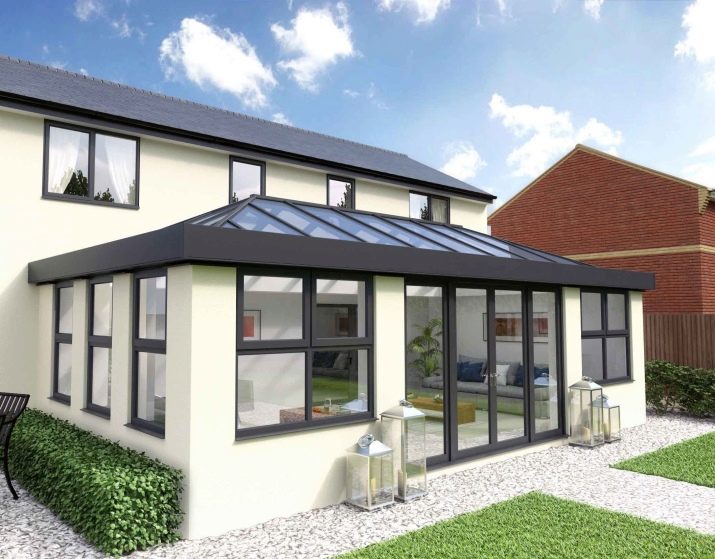
- Tambour in a country house, installed above the porch.The glass pavilion protects from the weather, it is easy to place a baby stroller or shopping bags on the site.
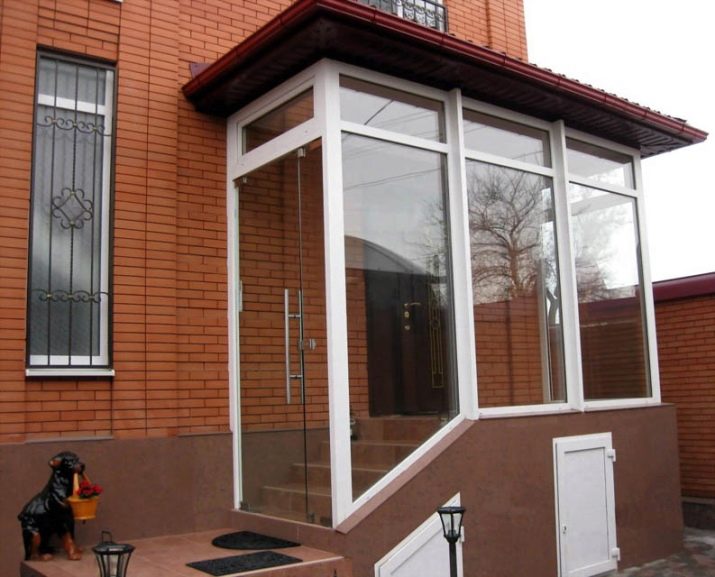
- Tambour-veranda complemented by glass sliding doors. The combination of brick walls and light panoramic glazing looks cozy and respectable.
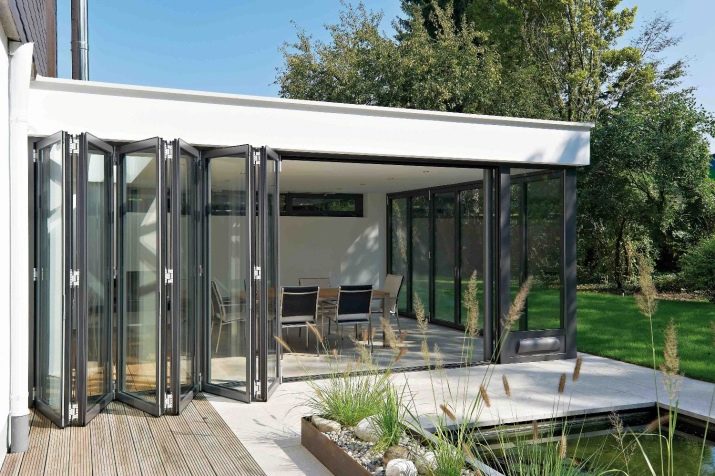
The following video describes the practical importance of a vestibule in a private house.








